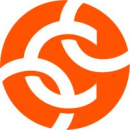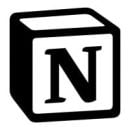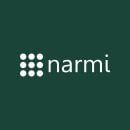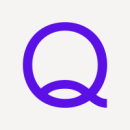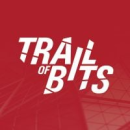It seems like each high-rise in New York City’s skyline is unique. Neoclassical arches, art deco spires, minute detail in stone façades and window ornaments. Each architect’s designs and techniques are different from the next, resulting in an eclectically patterned panorama.
The tools, frameworks and databases that make up a company’s tech stack achieve similar individuality. Just as an architect has their signature designs, engineers have preferred software. And when joined by the tech stacks of other New York City-based companies, a diverse cityscape emerges.
Built In NYC sat down with local tech companies that are hiring engineers to learn more about the tech stacks they’ve compiled, the projects engineers are excited about and what makes their culture stand out in the growing tech landscape.
What they do: Chainalysis is a blockchain data platform providing services to government agencies, financial institutions, and insurance and cybersecurity companies.
Inside the tech stack: Working at the intersection of engineering, data science and blockchain analysis, Deshpande said she regularly uses Python Data Analysis Library and PostgreSQL, and occasionally Scala, TypeScript and Java. The Chainalysis team also uses Spring Boot, Kafka and JetBrains Datalore. “We enjoy Datalore quite a lot for pair programming and for its ease of sharing,” Deshpande shared.
A cool project to note: Deshpande noted that, because blockchains are always increasing in size and every transaction must be preserved, the team often faces challenges having to do with data transformation and storage. In a recent project, Deshpande said she “worked on transforming blockchain data using AWS Glue because I can have a large spark cluster running the transformations and the result is available in minutes.” Reflecting on the project, she said, “I really enjoy how quickly an idea can turn into a working prototype.”
What sets Chainalysis apart: “What makes it special is the people,” Deshpande said. “They inspire me to dream bigger, work harder and achieve more. The people here are smart, kind and considerate, but they also know how to have fun.” Even though the team is mostly remote, she said her supportive co-workers have become great friends.

What they do: Northwestern Mutual is a financial planning, investment and insurance company.
Inside the tech stack: “It is all based in the JavaScript ecosystem, with React and TypeScript on the front end, and Node.js, TypeScript and Express on the back end,” Scholl explained. “Some of our latest developer favorites are GraphQL for data query, Storybook for component libraries and Jest with React Testing Library as a testing framework.” As a maturing team, Scholl said they have learned through trial and error: “We have standards and processes but also room to innovate.”
A cool project to note: Scholl said she and her team are working on several new projects for field users, one of which is in a phased rollout. “It is a high-profile project with several key business partners across various teams in the organization,” she said. “It has been rewarding to see the project from start to finish with feedback and revisions being incorporated in real time.”
What sets Northwestern Mutual apart: Without in-person events during the pandemic, Scholl said her team still found ways to connect. “We have a meeting each morning, and sometimes we’ll just keep that call going — our record is 12 hours. It helped us replace hallway conversations and easily connect on projects and deliverables throughout the day,” Scholl explained. “We’re all very open and collaborative. It’s easy to stay engaged when you enjoy working with your teammates.”

What they do: Notion provides organizational project management and note-taking solutions.
Inside the tech stack: “Our stack includes tech and tools like React, TypeScript, Kotlin, Swift, AWS and Datadog,” said Lafontant. She uses Hex occasionally to create tooling for triage tasks. “Hex is a really cool platform because it allows you to make a Structured Query Language script into a mini app that can be used by anyone at the company,” she explained.
A cool project to note: “I am really excited about a feature I am working on called Domain Claim,” Lafontant said. “It will help enterprise customers gain visibility and ownership of workspaces created with a company email address. It has been a fun experience putting myself into the shoes of IT and security administrators and doing research to form the best solution.”
What sets Notion apart: Lafontant appreciates the fact that product engineers get to engage with product work. “I was used to the solution being passed down to me or working with product managers on just the technical portion of the solution, but it is fulfilling to both write product requirement documents and talk to customers directly,” she said.
What they do: Republic is a financial tech company that connects private investors with opportunities in startups, gaming, real estate and crypto.
Inside the tech stack: The application core is a standard Ruby on Rails monolith, but Bazemore noted that, as the growing company looks to the future, “we’ve gone back to the drawing board to reevaluate our infrastructure from the ground up.” Bazemore listed changes including “overhauling the cloud infrastructure with Terraform to fully support infrastructure as code, adopting GraphQL through a federated service to support going to an API-first culture from the server, retooling a React client and utilizing serverless architecture.”
A cool project to note: Bazemore worked with team members across time zones to design and build a new client application. Previously built and tightly coupled with the company’s Ruby on Rails application, he said that by moving to an API-first design, “we no longer have a dependency to couple the client and server in the same repository or application.” Bazemore added, “Our entire engineering organization is changing at a fundamental level, and the spectrum of challenges that comes along with a re-architecture has been invigorating.”
What sets Republic apart: Bazemore said he’s never been a part of an organization that is as nimble as his employer. This ability to pivot came into play when a third-party vendor that was integral to Republic’s infrastructure stopped working. “Literally overnight we had a brand-new team put together dedicated to refactoring our integration to make it vendor agnostic,” Bazemore said. “Everyone is smart and has their own opinions, but we battle test those ideas against each other to come to the right solution under the given constraints.”
What they do: Narmi is a financial tech company that operates with the goal of transforming community banks and credit unions.
Inside the tech stack: Narmi uses a combination of React, React Native and Vue.js for its front end, and the back end is powered by a Django REST framework and AWS. Xie said the company also uses TypeScript and Next.js. “We’ve created our own design system to allow a unified experience for third-party developers wanting to integrate with Narmi,” she said. “I enjoy using it for internal projects as it creates a powerful shared language that allows both engineers and non-engineers to communicate more effectively. It also allows me to focus solely on the business logic of what I am building.”
A cool project to note: “Last year, we started a new initiative to proactively redesign many of the major user flows in our product, including our login process, navigation bar, account and dashboard pages and money movement flows,” Xie explained. The challenge was to streamline and improve the existing process while ensuring functional parity. Xie said that this project allowed the team to “address weaknesses in the previous design and adapt to shifts in design paradigms.” She enjoyed the challenge of implementing business logic to a new framework, and said it has been “rewarding to see users respond positively.”
What sets Narmi apart: “One of the many things I appreciate about Narmi is that we work hard during working hours and we have a ton of fun together outside of them,” Xie said, adding that the company hires great people who contribute to the strong engineering culture. “When you work with a fantastic team, work feels much less like a chore and becomes something you look forward to every day.” Narmi’s five-year anniversary stands out for her. On the way back from a company dinner, Xie said she remembers the team spontaneously broke into karaoke on the bus, singing Dancing Queen along with a variety of other seventies and eighties hits.

What they do: Hungryroot provides an AI-powered grocery delivery service focused on meal planning and healthy eating.
Inside the tech stack: Marks explained that the front end is mainly Javascript, but that the team is currently moving toward using React more, employing TypeScript in conjunction with React “to give us a little peace of mind as we scale the site.” For styling, the team uses CSS modules, and for testing, it’s Cypress and Jest. Marks said her favorite tool is Storybook because it “allows us to build components in isolation, making it easier and more efficient to get feedback from our design team.”
A cool project to note: “Our most challenging and interesting project is integrating a design system from scratch into an existing codebase, because we can’t just rip out old code,” Marks said. “Our app allows for heavy user customization, so we need to be methodical when replacing legacy user interface elements.” The team is prioritizing a cohesive design system to streamline development, communication and the onboarding of new developers. “This is my favorite project at the moment,” Marks noted. “While tricky, it’s exciting to be making noticeable contributions to core elements and see the impact of your work immediately.”
What sets Hungryroot apart: Marks said she appreciates working with team members who range from traditional engineers to people who come from fashion design or international relations. “Each person brings a different perspective and skill set to the table,” she said, noting that this diversity leads to fun team events: “Everyone shows up excited to see what game we’re playing and what random skills it will take to win.”
What they do: Meetup builds platforms for people to connect and experience events.
Inside the tech stack: Creed described the set of tools he uses as both broad and diverse. “Most of our web pages are running on Next.js, and our back end is GraphQL running on Lambda and AWS Fargate.” Always looking for improvements, Creed said he appreciates the thoughtfulness with which his team moved to Next from an older homegrown web platform and in the shift to GitHub Actions from Travis CI: “I love the opportunity to keep exploring new technologies, but I also love that we choose technologies that improve the developer experience.”
A cool project to note: “I’m currently working on an integration with a donation service, and we’re spinning up new infrastructure to handle specific interactions,” Creed said. “As a full-stack web developer, most of my day-to-day work doesn’t require new infrastructure, so I like flexing those skills when I can.” With access to common architecture patterns, he said he likes that he doesn’t have to “reinvent the wheel when it comes to security, monitoring and scalability.”
What sets Meetup apart: “I love how quickly an idea can become reality,” Creed said. “If you see an opportunity for improvement in process, product or software, you can always find support, advice and useful context from the rest of the team.” As a recent example, when he encountered a bug with some legacy code that dealt with a now-obsolete suffix on some identifiers, he brought it up with a more tenured engineer and got the context he needed to solve the problem: “I love that energy of constant improvement and a willingness to support each other.”

What they do: Candy is a digital asset development company that collaborates with athletes, artists and content owners to create and sell non-fungible tokens.
Inside the tech stack: As a developer focused on front-end technologies, Andrade appreciates tools that allow for scaling. “While I love all things JavaScript, I am most fond of React because it is a library rather than a framework,” she said, adding that this way, “an application can scale as big or as little as necessary so we can cater to all of the new and exciting companies we are partnering with.”
A cool project to note: Andrade said she is working on establishing the Candy Design System for engineering, which includes creating a menu for the technology and product teams to choose from. “While I love architecting large-scale applications, there is a certain satisfaction that comes with creating the architecture for components on a smaller scale, almost like developing a new language,” Andrade said. While there’s a challenge in creating a template that will work generically, she noted “it’s also satisfying that the components in this project will be used by all teams.”
What sets Candy apart: “Everyone brings something different with their vast array of past experiences,” Andrade said. “I love that the team and I share enthusiasm about tech and programming and are constantly striving to better our application.” With most team members working remotely, she did note that “bonding and forming camaraderie with teammates isn’t as easy as it used to be” but that they make time for both technical questions and catching up on personal news.
What they do: Quartet Health is a healthtech company connecting people with mental healthcare solutions.
Inside the tech stack: Maynard explained the back-end database of Quartet Health’s platform “is accessible through an abstract API services layer built on Java.” They use TypeScript to develop the company’s provider and patient front-end applications, which leverage the React framework. “From a data integration perspective, real-time access from external sources is achieved through a loosely coupled API platform built on Kotlin and various queuing and notification services. These are all organized in Docker containers and deployed to our virtual private cloud instance in AWS.”
A cool project to note: Maynard and his team are working to expand Quartet Health’s ability to identify and engage patient populations, as well as enhance how clients, providers and partners can connect and exchange data. “It is imperative that our integration platform can scale appropriately and has the necessary security and traffic management capabilities to support a diverse integration environment,” he said.
What sets Quartet Health apart: Maynard appreciates how the engineering team cohesively collaborates, evolves and innovates: “We pride ourselves in being part of an engineering organization that is aligned with our product, business and operational teams in integrating speed into quality mental healthcare for all.”
What they do: Trail of Bits provides infrastructure and blockchain security expertise, research and training.
Inside the tech stack: Czarnota explained the varied tech stack at Trail of Bits, which includes standard integrated development environments or code editors such as JetBrains integrated development environments, Visual Studio Code and Vim; static analysis tools such as CodeQL and Semgrep; and dynamic analysis tools such as fuzzers, web proxies and debuggers. “We develop many of our own tools internally and write detection rules for static analyzers. On occasion, we will write one-off Python scripts to facilitate our work,” Czarnota said.
A cool project to note: Czarnota noted the team recently audited the entire tech stack of an IoT device for a client who was ultimately thrilled with the team’s work. “We looked at its secure boot implementation, communication with external devices and Linux user space applications,” and by the end of the audit, “uncovered nearly 100 bugs in the product’s different components.”
What sets Trail of Bits apart: Despite being globally distributed, the team maintains close connections, according to Czarnota. “We have some of the smartest engineers, which leads to really interesting conversations,” he said, adding that this intimacy extends to their relationships with clients. “In our work we always have access to our customers’ complete source code during audits, and that’s a rare opportunity. This level of trust enables true partnerships with the customer’s development and product teams. We are fully immersed in their internal discussions, collaborations and product.”
What they do: Cadre is a financial technology company connecting investors with commercial real estate opportunities.
Inside the tech stack: Working primarily on the back end, Sharma said he interacts most with Django. “Once I understood the power of its object-relational mapping and other features, it quickly became one of my favorite web frameworks,” he said. Sharma also likes Cadre’s commitment to continuous integration and continuous delivery for rigorous testing. “We run a series of branch tests for every pull request and create a separate branch preview environment,” he said.
A cool project to note: One of Sharma’s favorite projects has been to “build a regression testing engine for the piece of software my team works on. It’s something I’ve worked on from concept to the build, which is an opportunity you don’t often get as an individual contributor just starting in your career like I am. The most enjoyable part of this project has been the system design and architecture muscles it’s allowed me to flex. I’ve been exposed to many aspects of our infrastructure that I wouldn’t otherwise interact with regularly and have learned a lot.”
What sets Cadre apart: The engineering team finds plenty of moments for fun. “When our Jira tickets started numbering in the 1,900s, I suggested adding a fun fact from the associated year in our pull request summaries,” he recalled. Another example is the team’s name, blockchain. Sharma said it was chosen because the software his team manages keeps a ledger of every financial transaction that happens in Cadre’s deals, similar to how cryptocurrencies operate. This isn’t obvious to new team members, Sharma explained, which usually results in a shared laugh.
What they do: Trumid is a financial technology company that powers a credit trading platform.
Inside the tech stack: As a back-end developer, Nair uses Scala and PostgreSQL, but they’re far from the only tools in the collective box at Trumid. “I leverage gRPC, Bazel and Akka streams to breathe life into various interconnected modules that communicate with one another via different APIs,” he said. A new tool Nair’s working on has the potential to “solve the problem of data-flow entropy, fighting against the natural chaos that comes with business requirements gaining complexity, granularity and nuance.”
A cool project to note: “Imagine all the good parts of Google Sheets and the Bloomberg Terminal, but with a slicker user interface and better response times,” Nair said, describing what he’s currently working on. “My favorite aspect of this long-term project is that it organically teaches me more of the intricacies of our business,” Nair said. “From multiplexing requests over persistent gRPC connections to saving on costly lookups by selectively caching states of the system, every corner is rich with engineering puzzles to solve.”
What sets Trumid apart: Nair explained that it’s the connection he has to the people at Trumid that he enjoys most, as well as the “culture of trust and camaraderie we foster and protect.” He said he enjoys knowing his opinions on the company’s technical direction are heard and valued, and that decisions don’t only come from the top: “Getting into a friendly debate with the chief technology officer isn’t a special occasion; it’s just another Tuesday morning.”
What they do: Kinetik provides healthcare technology and payments solutions for the nonemergency medical transportation industry.
Inside the tech stack: “Our core products are built using the MongoDB, Express, React and Node stack,” Rahman said. “On the security and development operations side, we use Datadog to collect logs and performance metrics and show our security posture on a single dashboard that can be used to monitor and share with internal stakeholders. We also use Doppler to share and manage secret variables efficiently.”
A cool project to note: The team is working to find the right solution to directly impact the quality of nonemergency medical transportation services. “We are currently working on a back-end service used to track vehicles for healthcare rides,” Rahman explained. “It’s both interesting and challenging as we are dealing with a high volume of sensitive data.”
What sets Kinetik apart: “We promote ownership of projects on the engineering side,” Rahman said. “The team is encouraged to think outside the box and implement solutions that go beyond just fulfilling the minimum requirements.”




